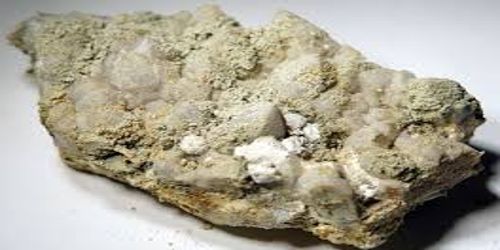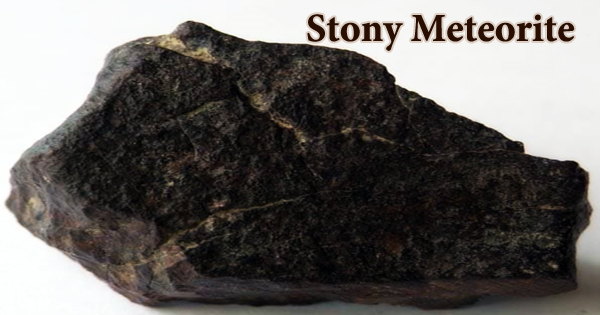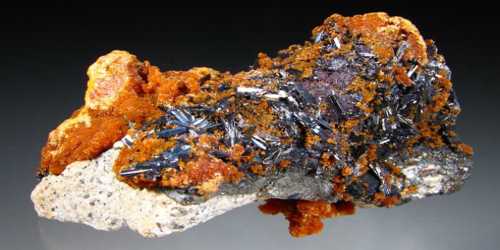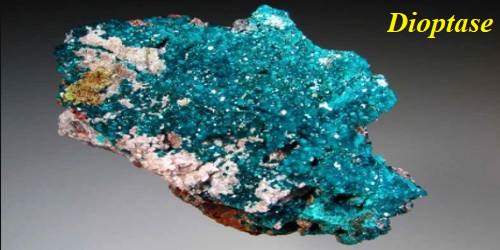Kankite is a mineral with the chemical formula Fe3+AsO4·3.5(H2O). It is a monoclinic yellow-green mineral containing arsenic, hydrogen, iron, and oxygen. It contains the elements arsenic, iron, hydrogen and oxygen. It is yellowish-green on fresh exposure, with a paler greenish yellow on exposure to air.
Kankite is named for the locality that yielded first specimens Kaňk, Czech Republic. Kankite forms in old (1200- to 1400-year-old) mine dumps.
General Information
- Category: Arsenate mineral
- Formula: Fe3+AsO43.5(H2O)
- Crystal system: Monoclinic
- Unknown space group
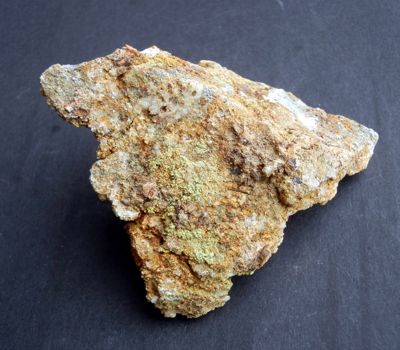
Fig: Kankite
Properties
Kankite has an uneven fracture and has a hardness of 2–3 (gypsum–calcite). It is translucent yellowish green in color with a grayish-yellow streak. Its luster is dull to vitreous. It forms encrustations, crust-like aggregates on matrix. The specific gravity of Kankite is 2.70.
- Formula mass: 257.82 g/mol
- Color: Yellowish–green
- Crystal habit: Tabular spearlike crystals in spherulites and botryoidal encrustations
- Fracture: Uneven
- Mohs scale hardness: 2 – 3
- Luster: Dull to vitreous
- Streak: Grayish yellow
- Diaphaneity: Translucent
- Specific gravity: 2.60 – 2.70
- Optical properties: Biaxial.
Occurrences
Kankite was first described in 1976 for an occurrence in the Kaňk, Kutná Hora, Bohemia, Czech Republic. It is a rare secondary mineral in highly weathered mine dumps containing arsenopyrite (in the Czech Republic). It occurs in association with scorodite, pesticide, parascorodite, zykaite, arsenopyrite, vajdakite, native arsenic, pyrite, proustite, gypsum, “limonite” and quartz.
It has also been reported from Munzig near Meissen; from Brand-Erbisdorf, Saxony; from Menzenschwand, the Black Forest in Germany. It has also been reported from the Suzukura mine north-northeast of Enzan, Yamanashi Prefecture, Japan.
Information Source:
